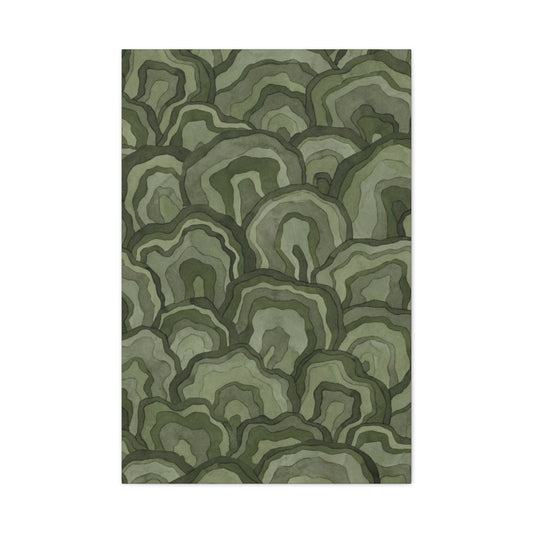The Emergence of Impressionism: A New Artistic Revolution
In the latter half of the 19th century, the art world witnessed an unprecedented shift, a revolution that would change the very essence of painting. This revolution, known as Impressionism, emerged in Paris during the 1860s, shaking the long-standing foundations of European art. It was more than just a new painting technique was an intellectual and philosophical rebellion that sought to redefine the purpose and possibilities of art. At the heart of Impressionism was the quest to capture the fleeting nature of reality: light, color, and the ever-changing atmosphere that surrounds us. The Impressionists were no longer content with replicating the world in a highly detailed and exacting manner, as was typical in traditional academic painting. Instead, they sought to express a raw, unmediated experience of the moment's truth that transcended the limitations of precise representation.
The academic art traditions that had dominated for centuries in Europe were defined by their emphasis on meticulous detail, realism, and idealized depictions of the human figure and historical scenes. These traditions adhered strictly to rules and conventions, which prioritized exactness and precision above all else. However, the rise of Impressionism signaled a break from these conventions. It was a conscious rejection of realism, aiming not to capture every single detail of a scene but to convey its emotional essence. The Impressionists were fascinated by the intangible qualities of light and color, aiming to reveal the inner workings of nature by expressing how light shifts, how colors blend, and how shadows play over surfaces in real time. For them, the focus was on the transient, the impermanent desire to present the world as it appeared in that fleeting, specific moment in time.
Impressionism was much more than a stylistic experiment, a statement against the established norms. The artists were not interested in perfecting every stroke or achieving technical perfection; instead, they sought to evoke an emotional response from the viewer. They were not just painting what they saw, but what they felt. Every brushstroke, every patch of color on the canvas, was meant to resonate with the ephemeral nature of life itself. As these painters sought to express the impermanence of reality, their work challenged the long-standing academic principles that had emphasized permanence, historical accuracy, and idealized beauty. This bold approach would lead them to be mocked, dismissed as amateurs, and even ridiculed, but their defiance was part of what made their work revolutionary.
The Radical Approach to Painting: Embracing Imperfection
One of the core techniques of the Impressionists was their preference for painting "en plein air," or outdoors. Unlike their predecessors, who typically worked from sketches or studied nature in the controlled environment of a studio, the Impressionists took their easels and brushes into the open air. They painted scenes in real-time, observing the ever-changing effects of light, weather, and atmosphere. This decision was not only a technical one but also a philosophical stance. By painting outdoors, the artists connected directly with their surroundings and captured the world in its most dynamic, unpredictable state. It was an attempt to freeze a moment in time, not as it appeared in a static composition, but as it existed in a constant state of flux.
Working in this way, the Impressionists often had to sacrifice the level of detail and precision that characterized academic painting. The rapidly changing light meant that scenes could transform within moments, so the artists had little time for meticulous refinement. Their brushstrokes were quicker, more spontaneous, and at times, they appeared unfinished or rough. Yet, this roughness was precisely what made their paintings feel alive. These artists were not concerned with achieving a polished look, nor were they concerned with perfect likenesses. Instead, they captured the spirit of a fleeting play of light, the shimmering surface of water, or the soft transitions of a sky at dawn. The Impressionists often used short, choppy brushstrokes, relying on the viewer’s eye to blend the colors at a distance rather than achieving the smooth blending that was customary in academic art.
The term "Impressionism" itself was initially coined as a derogatory remark. It originated from a critic’s mockery of Claude Monet’s work Impression, Sunrise, which he deemed unfinished. This criticism, aimed at the unfinished, sketch-like nature of Monet’s painting, would soon be embraced by the artists themselves. They saw the term as fitting, reflecting their focus on creating an impression or a momentary glimpse of the world around them. What was initially intended as an insult quickly became a badge of honor for the group. The art establishment of the time, which championed precise technique and detailed compositions, reacted with disdain. The Impressionists were accused of lacking proper skill, of being reckless or lazy, but this judgment only fueled their resolve to push boundaries and develop a style that was uniquely their own.
In many ways, the response to Impressionism mirrors the reception of modern art movements today. Much like contemporary artists, the Impressionists faced harsh criticism for straying too far from tradition. Just as modern abstract art is often criticized for being too removed from reality, the Impressionists were accused of distorting the truth. However, just as modern art movements have eventually found their place in the history of art, so too did the Impressionists gain recognition. Over time, the unique qualities of their work way they portrayed light, color, and the sensation of the momentwould become recognized as revolutionary and groundbreaking. In retrospect, it is clear that the Impressionists did not just change painting; they transformed how we perceive the world around us.
The Influence of Scientific Discoveries and the Legacy of Impressionism
The Impressionists were not only influenced by the aesthetic concerns of their time, but also by the scientific advancements that were reshaping society’s understanding of the world. During the 19th century, there were significant breakthroughs in the fields of optics and color theory. The work of scientists like Michel Eugène Chevreul, who studied color contrast and how colors interact, provided the Impressionists with new insights into how light and color could be used in painting. They also drew inspiration from Sir Isaac Newton’s discoveries on the refractive properties of light, which demonstrated how light could be broken down into different colors.
Armed with this scientific knowledge, the Impressionists experimented with color in ways that had never been done before. They used broken color, where small dabs or strokes of pure color were placed next to one another, allowing the viewer’s eye to mix the colors. This technique allowed the Impressionists to create vibrant, luminous works that seemed to shimmer with energy. They were able to evoke the shifting colors of a sunset, the reflective surface of water, or the changing sky in a way that conveyed not just a visual representation but the very feeling of the moment.
Their commitment to capturing the essence of the momentwhether it was a fleeting change in the weather or the interplay of light across a landscape central to their work. Instead of painting a static scene, they sought to portray a dynamic and shifting world. A landscape could never be reduced to just a static view of a field or a tree; it was a constantly evolving spectacle. Similarly, a portrait was not merely an accurate likeness but a reflection of the subject’s movement, mood, and the unique lighting at the moment of creation.
The Impressionists revolutionized the way we understand painting and its potential. Their work was not about representing the world with painstaking accuracy but about capturing its essence in a moment. This focus on light, color, and impermanence laid the foundation for the development of modern art movements that followed. The legacy of the Impressionists continues to influence artists today, who still draw inspiration from their exploration of color, light, and the emotional impact of art. The Impressionists didn’t just change the style of painting; they fundamentally shifted our approach to seeing the world and expressing it through art. Their work marked the dawn of a new artistic era, one that prioritized the fleeting and the ephemeral over the permanent and the precise.
The Impressionist Revolution: New Approaches to Painting
The success of the Impressionist movement in the late 19th century was not just due to the novel ideas that the artists brought to the forefront, but also because of the revolutionary techniques they used to express those ideas. In stark contrast to the conventional methods of academic painting, the Impressionists embraced a more immediate, raw, and expressive approach to capturing the world around them. Their aim was not to achieve photorealistic depictions of their subjects, but to convey a sensory experience, often focusing on the fleeting effects of light. The Impressionists’ innovations in technique forever altered the landscape of Western art, pushing boundaries and reshaping traditional expectations.
One of the key characteristics of their technique was the rejection of the smooth, meticulous blending and glazing techniques traditionally employed by academic painters. Instead, the Impressionists adopted a far more energetic style of painting, characterized by short, rapid brushstrokes. These brushstrokes, often thick and deliberately visible, were used to suggest the essence of a scene rather than its intricate details. The goal was not to depict every tiny element within a composition but to capture the broader, dynamic elementslight, color, and movement that defined the scene. The brushstrokes became a tool to convey the fluidity of life, showing the way light dances across surfaces, how the atmosphere shifts in the moment, and how a scene constantly evolves.
What set the Impressionists apart was their ability to portray a sense of spontaneity. Rather than creating highly controlled, detailed compositions, their works felt alive, as though they were snapshots of a fleeting moment. It was as if the canvas were a window through which the viewer could experience the world as it appeared in that brief instant, with colors merging and shifting in real-time. The use of rapid brushstrokes was critical in achieving this effect, enabling artists like Claude Monet, Pierre-Auguste Renoir, and Edgar Degas to capture the vibrancy and movement of modern life with remarkable immediacy.
Textural Innovations and the Impact of Impasto
The Impressionists’ commitment to breaking with tradition extended beyond the use of brushstrokes; they also developed techniques that added a tactile, physical dimension to their work. One such innovation was impasto, a technique in which thick layers of paint are applied to the canvas. The thickness of the paint added a sense of texture that became a defining feature of many Impressionist masterpieces. Instead of painting smooth, flat surfaces, the paint itself became an integral part of the visual experience. Impasto created a three-dimensional effect, giving the artwork a sense of weight and substance.
By applying paint in such thick layers, the brushstrokes became visible as raised surfaces on the canvas. This technique was not just about texture for texture’s sake; it helped convey a deeper sense of depth and light in the painting. The way light interacted with the raised paint surfaces brought the artwork to life, making the texture an active part of the visual experience. In works depicting water, for example, the reflections were painted in such a way that they felt as though they were solid, almost sculptural elements in their own right. The Impressionists' use of impasto transformed the painted surface into a dynamic force, emphasizing that the materiality of the painting was just as significant as the subject matter it portrayed.
The use of impasto, combined with the Impressionists' loose and free brushwork, helped to give their paintings a tangible presence that engaged the viewer’s senses. This technique also contributed to the overall luminosity of their work, amplifying the interaction of light and color in a way that traditional methods could not replicate. Impasto allowed the paint to stand out from the canvas, casting subtle shadows and catching the light at different angles, which further contributed to the vibrancy of their works.
The Role of Color: Optics and the Play of Light
Color was central to the Impressionists' revolutionary approach, and they developed an entirely new method of handling it that made their works burst with life and energy. One of the most important aspects of their color theory was the use of pure, unmixed pigments. Traditional academic painters often mixed their paints on the palette to create more muted, subdued colors. However, the Impressionists preferred to keep their colors bright and intense. They worked directly on the canvas, allowing different hues to interact with each other in a way that created a shimmering effect. This practice is known as optical mixing, where small dabs of color are placed next to each other on the canvas, and the viewer’s eye blends them at a distance.
This technique of optical mixing allowed the Impressionists to evoke the vibrancy and dynamism of natural light, as the colors reacted to their surroundings. Instead of mixing colors traditionally, the Impressionists allowed their colors to sit side by side, enabling the light to reflect off each color and create a sense of luminosity. The colors in an Impressionist painting were not just pigment on a surface; they were reflections of light itself, constantly shifting in response to the atmosphere, the time of day, or the weather conditions.
In addition to optical mixing, the Impressionists employed complementary color theory to create striking contrasts and enhance the impact of their compositions. Complementary color pairs of colors that are opposite each other on the color wheel, such as blue and orange or red and greenwere used in juxtaposition to create vibrant contrasts. These complementary colors were not blended, but rather kept distinct, so that the viewer could experience the full intensity of each color. The result was a heightened sense of visual energy and a deeper, more dynamic interaction between colors, which mirrored the ever-changing nature of the world around them.
The Impressionists also explored the subtleties of color temperature, using warm tones alongside cool tones to create a sense of atmosphere and depth. The play of warm and cool colors within a single scene could suggest the time of day, the weather, or even the emotional tone of the moment. Whether depicting the golden light of a sunset or the cool shadows of midday, the use of color became one of the defining features of the Impressionist style, allowing artists to communicate the nuances of light and mood in ways that traditional painters had never attempted.
The Art of Impressionism: Defying Precision and Creating Movement
Perhaps one of the most distinctive features of Impressionist painting was the deliberate avoidance of hard, defined edges. Unlike the smooth, controlled lines that were a hallmark of academic art, the Impressionists chose to embrace softness and fluidity. By working "wet into wet," they allowed the paint to blend and merge as it was applied, creating edges that were not sharply defined but rather blurred, just as we perceive objects in the real world. This approach was not about creating precise boundaries between forms but about capturing the sense of continuous movement and change that defines life.
The technique of working wet into wet gave the Impressionists’ paintings a sense of immediacy, as though they were in the process of being created in front of the viewer’s eyes. The soft edges allowed the light to blend seamlessly with the subject matter, creating a sense of unity between the objects and the environment. Rather than isolating each element, the Impressionists' paintings emphasized the interconnectedness of everything within the scene, way light, air, and color shape and define the world.
In addition to wet into wet, the Impressionists also employed the technique of broken color, where the paint was applied in small, discrete strokes or dabs, leaving gaps between the strokes that allowed the underlying colors to show through. This technique further enhanced the sense of movement and light within the painting. The gaps in the painted surface helped to create a luminosity that mimicked the natural play of light in the world. Whether using hatching, cross-hatching, stippling, or dry brushing, the Impressionists developed a range of methods that allowed them to break up the color and create a textured, dynamic surface. This sense of broken color was one of the hallmarks of their style and a critical component in conveying the shifting effects of light and atmosphere that were central to their artistic vision.
In actuality, the Impressionists revolutionized the world of art by abandoning the traditions of precise, realistic depiction in favor of an approach that emphasized light, movement, and the momentary quality of life. Through their innovative techniques, such as rapid brushstrokes, impasto, optical mixing, and broken color, they captured the world in a way that had never been seen before. Their work, which felt immediate and alive, continues to resonate with viewers today, reminding us of the fleeting beauty of the world around us and the ever-changing play of light and color.
Mastering the Moment: Iconic Impressionist Artists and Their Revolutionary Contributions to Art
The Impressionist movement stands as one of the most transformative periods in the history of art. It introduced a revolutionary approach to painting that emphasized capturing the transient nature of light, atmosphere, and everyday life. The artists who led this movementvisionaries like Claude Monet, Pierre-Auguste Renoir, Edgar Degas, and Camille Pissarroredefined the boundaries of artistic expression. Their works pushed past the rigid constraints of academic painting, focusing instead on the immediate, fleeting moments that make up our everyday experiences. By embracing innovation, freedom, and experimentation, they brought about an artistic revolution that continues to influence and inspire artists today.
Claude Monet: The Master of Light and Color
Among the artists who defined the Impressionist era, Claude Monet stands out as one of the most iconic and influential figures. His obsession with the shifting effects of light made him a trailblazer in the development of Impressionism. Monet's ability to capture the subtleties of light, especially as it changes throughout the day, transformed the way artists approached color and texture. His celebrated series of paintings, including "Water Lilies" and "Rouen Cathedral," showcases his exceptional skill in portraying the same subject under different light conditions, exploring the effects of time and atmosphere on a single scene.
Monet’s groundbreaking technique involved revisiting the same landscape at different times of the day, allowing him to document how light, weather, and the surrounding environment changed. This method not only enhanced the dynamic quality of his paintings but also introduced the concept of depicting movement and change within a single frame. His masterpiece, "Impression, Sunrise," is often credited with coining the term "Impressionism." With loose brushstrokes and a vibrant color palette, Monet was able to evoke a feeling of dawn breaking over the harbor, capturing the mood of the moment rather than providing an exact representation of the scene. His approach marked a decisive break from traditional, detailed representations of reality, making light and atmosphere the central subjects of his work.
Monet's innovations did not stop technique also broke free from traditional subject matter. Whereas earlier artists had focused on grand historical or mythological narratives, Monet turned his attention to landscapes, water scenes, and everyday life, capturing ordinary moments with extraordinary sensitivity. His explorations of light, such as in his famous "Water Lilies" series, evoke a sense of tranquility and timelessness. Monet’s work encouraged future generations of artists to embrace the fleeting, ever-changing world around them, setting the stage for the modern approach to painting.
Pierre-Auguste Renoir: Celebrating Life and Vibrancy
Pierre-Auguste Renoir was another key figure in the Impressionist movement whose work celebrated the vibrancy of life. Known for his vivid and dynamic compositions, Renoir captured people in moments of leisure, social gatherings, and intimate moments. Whether portraying individuals in gardens, cafes, or at parties, Renoir’s paintings convey a sense of warmth, joy, and vitality. His style was marked by lively brushstrokes that not only reflected the movement and energy of his subjects but also conveyed a deep sense of light interacting with the human form.
Renoir’s use of color was revolutionary in its own right. His ability to capture the effects of natural light on skin, fabric, and nature was unparalleled. This mastery allowed him to infuse his paintings with a glowing, almost ethereal quality, making his scenes of social life feel full of light and life. One of his most renowned works, "Luncheon of the Boating Party," is a perfect example of Renoir’s unique ability to capture moments of happiness and social connection. The painting depicts a group of friends enjoying a leisurely lunch by the river, bathed in sunlight, with each character rendered in vibrant colors that bring the scene to life. Through this work, Renoir masterfully used color and light to enhance the emotional depth of the moment, making the viewer feel as if they were part of the gathering.
In addition to his focus on human interaction, Renoir’s paintings often featured vibrant outdoor settings, bringing the natural world into his work. His scenes of outdoor leisure, such as picnics or boating parties, were alive with color, reflecting the joy and freedom of the moments he depicted. Renoir’s dedication to capturing the essence of life through light, color, and movement solidified his place as one of the most celebrated artists of the Impressionist movement. His work continues to influence contemporary artists, reminding us of the beauty of human connection and the fleeting moments that make life so rich.
Edgar Degas: Capturing Motion and Urban Life
While Claude Monet and Pierre-Auguste Renoir often focused on outdoor scenes, Edgar Degas, though associated with the Impressionist movement, had a different approach. Degas was particularly interested in capturing the energy and movement of the human body, often through the lens of urban life. His work is known for its dynamic compositions, unusual perspectives, and emphasis on movement. Degas’s most famous subjects include ballet dancers, horse races, and women at work, with each piece offering a fresh perspective on the everyday world.
One of the distinguishing characteristics of Degas’s work is his ability to capture the human body in motion. His depictions of ballet dancers, particularly, convey a sense of fluidity and grace. Rather than simply rendering a static pose, Degas’s dancers are captured mid-movement, their bodies in the process of bending, turning, or jumping. Through his mastery of light and shadow, Degas was able to highlight the emotional intensity and physicality of the dancers, making them appear as though they were alive and full of energy. His unconventional viewpoints, such as looking up at dancers from below or capturing them from behind, also set his work apart from that of other Impressionists.
Degas's skill in portraying movement extended beyond the ballet studio. His horse racing scenes, for example, depict the thrill and excitement of the races, capturing the power of the horses and the urgency of the moment. These works show Degas’s ability to combine his technical mastery of form with an acute sense of energy, resulting in compositions that feel both dynamic and intimate.
While he is often associated with Impressionism, Degas was known for his preference for working in a more traditional studio setting rather than painting en plein air like many of his contemporaries. However, his approach to depicting movement, light, and human figures aligned closely with the broader goals of the Impressionist movement: to capture the essence of a fleeting moment.
Camille Pissarro: The Quiet Observer of Nature
Camille Pissarro, one of the founding figures of the Impressionist movement, was a master of landscape painting. Unlike some of his contemporaries who focused on the bustling urban life of Paris, Pissarro often turned his attention to rural life, capturing the peacefulness of the countryside. His work has a sense of quiet observation, as he sought to convey the changing atmosphere of a place rather than simply its physical appearance. Whether it was the shifting seasons or the effects of sunlight on a field of crops, Pissarro’s paintings encapsulated the relationship between nature and light in a way that felt both intimate and universal.
Pissarro’s landscapes often depicted humble, everyday scenes of rural labor or nature, reflecting his deep connection to the land and its rhythms. His approach was marked by a subtlety and sensitivity to the world around him, a quality that allowed him to create works that were both emotionally resonant and visually striking. In paintings like "The Harvest" and "The Boulevard Montmartre on a Winter Morning," Pissarro conveyed the changing seasons, the passage of time, and the simple beauty of rural life. His works often featured wide, open spaces, with figures working or strolling through the landscape, allowing the viewer to feel the serenity and solitude of nature.
As a founding member of the Impressionist movement, Pissarro’s contributions helped solidify the movement’s emphasis on capturing the fleeting, ever-changing moments of everyday life. His focus on the natural world and rural scenes added a sense of peace and stillness to the otherwise energetic and vibrant work of his fellow Impressionists.
The Legacy of the Impressionists
The legacy of the Impressionists extends far beyond their immediate time. While they were initially criticized and rejected by the establishment, their groundbreaking approach to painting has since become a cornerstone of modern art. Through their innovations in technique, light, and subject matter, artists like Monet, Renoir, Degas, and Pissarro paved the way for later movements such as Post-Impressionism and Modernism. Their exploration of light, color, and atmosphere changed the way art was made, seen, and understood.
The Impressionist movement forever altered the course of art history. The artists involved were not simply revolutionizing painting techniques; they were changing how we perceive the world around us. By focusing on everyday moments, fleeting light, and the nuances of human experience, they created works that were vibrant, dynamic, and full of lifecapturing the essence of the moment in ways that continue to inspire us today.
The Materials Behind the Impressionist Revolution: A New Era in Artistic Expression
The innovation behind the Impressionist movement is not solely credited to the groundbreaking techniques of brushwork or the use of color theory; it also stems from the specific materials and tools that these artists had at their disposal. The availability of certain media played a pivotal role in transforming the way they approached their work, enabling them to challenge conventional painting methods. The materials they used were essential to the spontaneity and distinctiveness that marked Impressionism, setting it apart from previous artistic traditions and offering a new way of viewing and representing the world.
A major factor that enabled the Impressionists to achieve their revolutionary style was the advent of oil paints in tubes. Before this invention, artists had to mix their paints by combining raw pigments with oils, a process that often took considerable time and effort. The introduction of oil paints in portable tubes during the mid-19th century was a game-changer for artists, granting them the ability to work quickly and efficiently outside the confines of the studio. This newfound mobility opened the doors to plein-air painting, where artists could paint directly from nature, capturing the changing qualities of light and atmosphere on the spot. The convenience of these pre-mixed paints meant that artists could carry their entire palette of colors with them, making it easier to work in the open air and capture the fleeting beauty of a moment.
The development of these portable paint tubes also complemented the tools used by the Impressionists, further enhancing their ability to create works that were dynamic and expressive. One of the most crucial tools in the Impressionist painter’s kit was the hog bristle brush. These brushes, known for their durability, were particularly favored for their ability to apply thick, impasto layers of paint. The short and long flats of the hog bristle brush were especially adept at creating the distinctive texture that defined much of the movement. The resilience of hog bristles allowed for quick, energetic brushstrokes that could move large amounts of paint across the canvas. This was particularly important for the Impressionists, who sought to convey the immediacy and vitality of the scenes they painted.
Tools and Techniques: The Palette Knife and Other Essential Instruments
While brushes were central to their practice, the Impressionists also incorporated a range of other tools that contributed to the unique qualities of their paintings. One of the most important was the palette knife, which was used not just for mixing paints but also for applying paint directly onto the canvas. With its angular, flexible blade, the palette knife allowed artists to create more sculptural, textured effects. This technique of layering paint was essential for building up a sense of depth and dimension, giving the artwork a tactile quality that invited viewers to engage with the surface of the painting.
The Impressionists also made use of a simple wooden palette, where they would prepare their vibrant pigments before application. The simplicity of this tool allowed the artists to focus on the purity of color, which was essential to their style. Rather than creating elaborate compositions with fine details, they used pure, unblended colors to capture the essence of their subject matter. The palette itself became a crucial part of the painting process, serving as a tool for experimentation and exploration, while also serving as a point of departure for the work that would come to define the movement.
When it came to their choice of canvas, the Impressionists pushed the boundaries of what was traditionally expected. While painting on primed canvas mounted on stretcher bars or wooden panels was the norm at the time, the Impressionists embraced the texture of the canvas itself, incorporating it into their works in innovative ways. The rough, uneven surface of the canvas became an integral part of the final painting, interacting with the impasto technique to create a physical and sensory experience for the viewer. The texture of the canvas was not merely a passive backdrop but an active component of the artwork, contributing to its sense of movement and energy.
The Philosophy of Impressionism: Capturing the Fleeting Moment
The legacy of the Impressionists is not only defined by their technical innovations but also by their approach to life and art. Their work was an exploration of the ephemeral nature of the world around them, and they sought to capture moments in time that were fleeting and transitory. The Impressionists understood that the world is in constant flux, and their paintings reflected this understanding by presenting a snapshot of the present moment. This philosophical perspective was radical at the time, as it rejected the idea of a fixed, unchanging reality in favor of a more fluid and dynamic understanding of life.
In capturing light, color, and atmosphere, the Impressionists emphasized the impermanence of the world. Rather than striving for photographic accuracy or idealized representations, they embraced the shifting nature of the environment, painting scenes as they appeared in a specific moment. Whether it was the play of sunlight on a city street, the reflection of clouds in a pond, or the subtle transitions of color in the sky, the Impressionists sought to convey the ever-changing beauty of the world. Through their work, they encouraged viewers to appreciate the fleeting and transient qualities of existence, reminding us that everything is subject to change.
The movement’s emphasis on capturing the present moment also had a profound impact on the way people viewed time and experience. For the Impressionists, art was not just a reflection of the world, was a means of engaging with the world as it was happening. Their paintings invite us to see the world in a new light, to recognize the beauty in the ordinary, and to embrace the impermanence of life. This perspective continues to resonate in modern art, as artists today still draw inspiration from the Impressionists' commitment to capturing the essence of a moment.
The Impressionists also pushed back against the formalism and academic rigidity that had dominated the art world for centuries. Their focus on immediate perception, rather than idealized representation, signaled a break from traditional artistic conventions. They rejected the meticulous attention to detail and linear precision that had characterized classical painting, opting instead for looser, more expressive brushstrokes and an emphasis on light and color. In doing so, they allowed the viewer to interpret the artwork in a more personal and subjective way, creating a more intimate connection between the artwork and the observer.
In conclusion, the Impressionist movement was not just a revolution in technique but a profound shift in the way we experience and interpret the world. The materials and tools used by the artists, from the portability of oil paints in tubes to the texture of the canvas and the use of palette knives, played a crucial role in enabling them to express their vision. More than just a style of painting, Impressionism was a philosophy that embraced the transient, shifting nature of life and sought to capture the world as it was in the moment. Through their innovative techniques and philosophical approach, the Impressionists forever changed the way we perceive the world around us, leaving an indelible mark on the history of art.




























